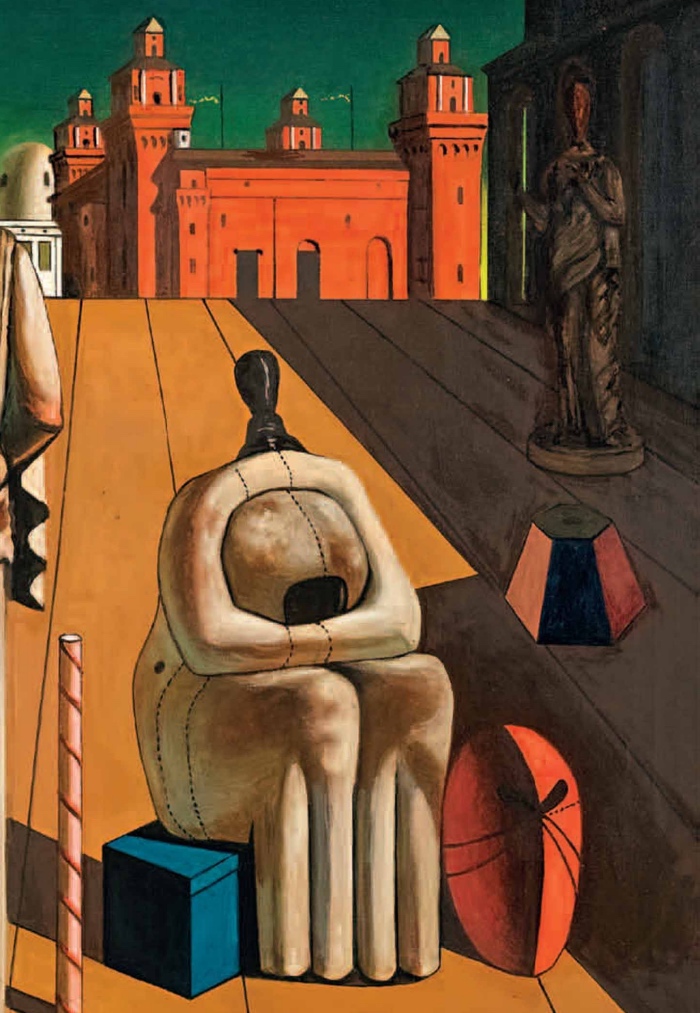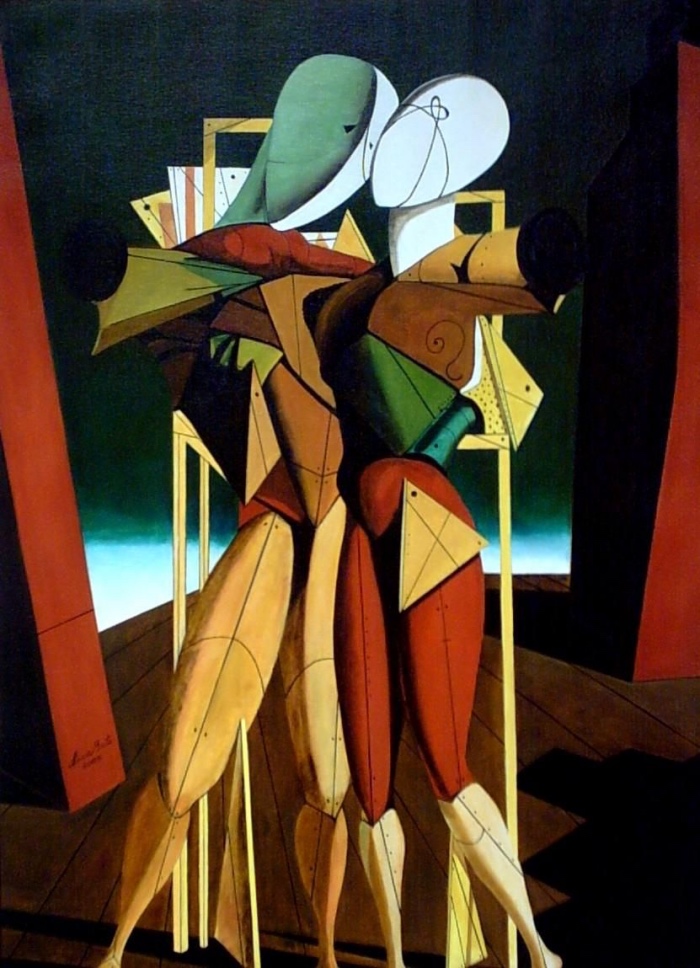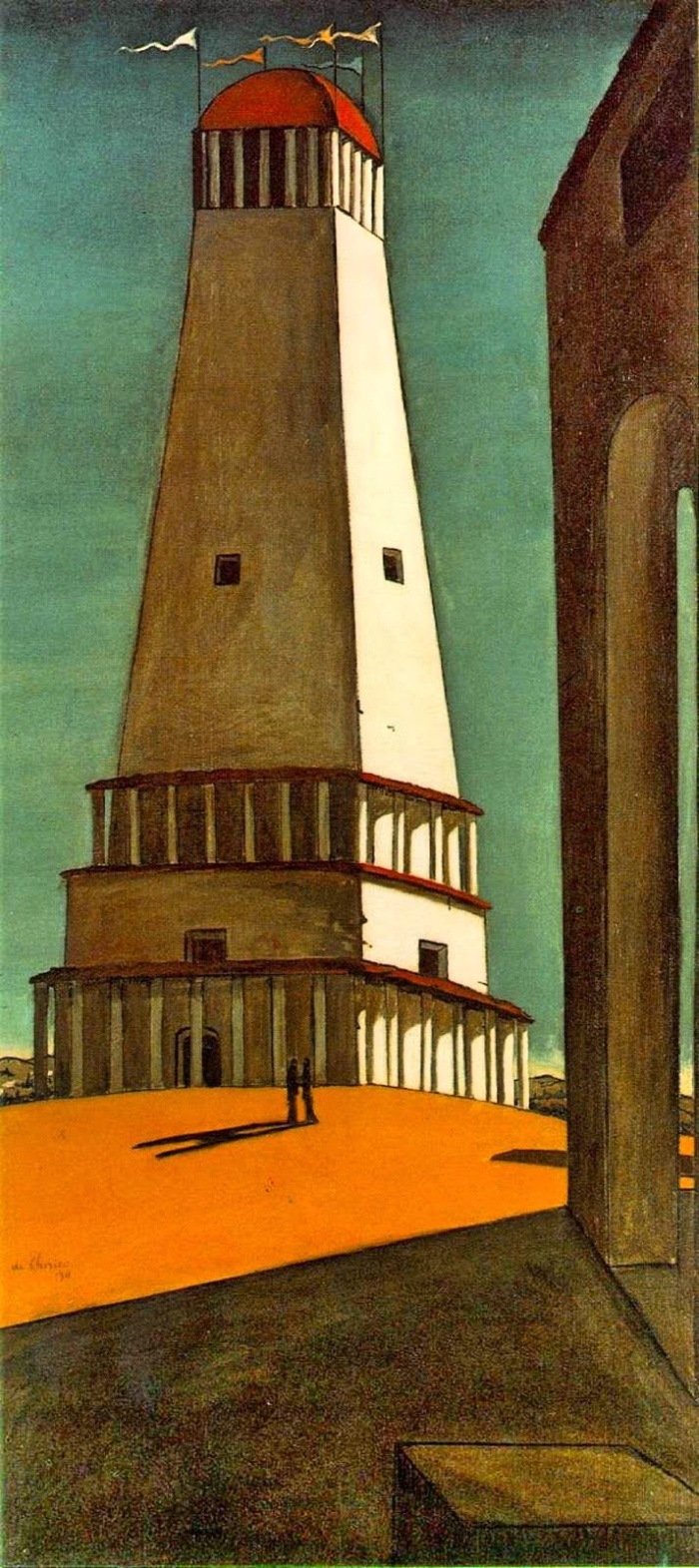
Have you ever wondered which artistic movement represented one of the most revolutionary turning points in 20th century Italian culture? With this post, I want to take you on a discovery of metaphysical painting, from its origins to the works of Giorgio De Chirico and the other painters belonging to the school of Ferrara.
What is metaphysical painting and who are the main artists

Ettore e Andromaca (1917) – Galleria Nazionale d’Arte Moderna, Roma
Metaphysical painting fascinates not only with its precise and detailed representation of subjects but also with the mysterious atmosphere it conveys. Its aim is to prompt the observer to look beyond the pure and simple representation of reality, to grasp what lies behind the surface and to go beyond the boundaries of the senses.
This artistic current aims to reveal the essence of things, setting aside what can be touched and observed in reality. In order to convey this, metaphysical painting has very specific characteristics:
- a deceptively logical perspective that follows unexpected vanishing points;
- the complete omission of the human figure, often replaced by statues, mannequins, mythological beings and prolonged shadows;
- a uniform and flat use of colour.
METAPHYSICAL PAINTING AND FUTURISM
Metaphysical painting andFuturism were born at the same time and you might wonder what the differences are between two movements that arose at the same time and were immersed in the same historical period.
While Futurism celebrates dynamism, roar and a decisive detachment from the past, metaphysical painting stands for stillness, evocation of silence and contemplation, with deep connections to the classical past. However, it is essential to note that metaphysical painting has links to other currents such as Surrealism, Dadaism, Magic Realism and Romanticism.
THE EMBLEMATIC ARTISTS OF METAPHYSICAL PAINTING
Between 1912 and 1914, figures such as Giorgio De Chirico and his brother Alberto Savinio (also known as Alberto De Chirico) emerged as pioneers of this artistic trend. De Chirico, in particular, struck the imagination of artists and critics such as Guillame Apollinaire. Other artists who contributed deeply to the movement include Carlo Carrà, Ardengo Soffici, Giovanni Papini, Filippo De Pisis and Giorgio Morandi.
Despite the difficulties imposed by the First World War, these artists stayed in touch with each other, sharing their visions and ideas through letters, creating what we know today as the School of Ferrara.
THE IMPRINT OF DE CHIRICO
Giorgio De Chirico is considered the father of metaphysical painting and had a profound and lasting influence on the movement. However, the question arises as to how his artistic journey towards metaphysical painting began.
The answer lies in the interaction between the artist and the world around him.
One of the most fascinating stories concerns a specific work: ‘The Enigma of an Autumn Afternoon’ from 1910. According to various accounts, while in Florence, De Chirico experienced a revelation of sorts. While walking in Piazza Santa Croce, under the effects of some medication he was taking, he had a vision. This otherwise familiar and ordinary place appeared to him in a completely new light, almost as if he were observing a scene from a dream or another dimension. This experience enabled him to understand the ephemeral nature of reality and how important it is to observe the world through the unconscious, concepts that became central to his art.
De Chirico’s ability to mix the ordinary with the dream, to bring reality to a place full of enigmas, characterised much of his work and made his art ‘metaphysical‘ in fact, an art that goes beyond what is real and ventures into mysterious territory.
De Chirico did not limit himself to painting simple landscapes or portraits but sought to capture the very essence of existence, taking the viewer on a journey through suspended temporal spaces and dreamscapes.

De Chirico, La nostalgia dell’infinito
CHARACTERISTICS OF METAPHYSICAL WORKS
The most important works of metaphysical painting depict urban scenes immersed in silent and melancholic atmospheres.
The scope of metaphysical painting does not stop at paintings and its influence can be recognised in architecture, design and other art forms.
Over time, artists such as De Chirico and Carrà expanded and diversified their style, shifting their focus from squares to still lifes, a path also followed by Morandi’s metaphysical painting.

